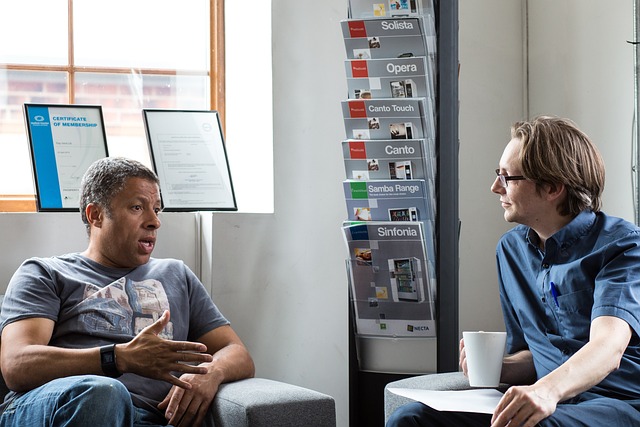In an era of bite-sized tweets, airdrops, emojis as replies, and lightning-fast swipes, the timeless art of profound conversation seems to be taking a backseat. Yet, how to ask questions that open up communication is the secret key to moving beyond this superficial chatter. Imagine for a moment, a world where our dialogues are limited to mere transactional exchanges.
Where the depth of our understanding is as shallow as a text message. It’s not just disheartening but also a reminder of how pivotal genuine conversations are in weaving the intricate fabric of human relationships. Yet, every once in a while, amidst the hurried chatter and brief exchanges, you find yourself engrossed in a conversation so deep, so enriching, it leaves an indelible mark on your soul.
What makes these discussions so different? The answer often lies in understanding how to ask questions that open up communication. Why do some dialogues leave us introspecting for days while others are forgotten the moment they end?
The bridge to such profound interactions often starts with a question. Not just any question, but the right one. Asking the right questions can be like using a master key, one that opens doors to hidden chambers within a person’s heart and mind, revealing stories, emotions, fears, dreams, and aspirations. These questions do more than elicit information; they create connections, build trust, and can sometimes even change the course of someone’s life.
Now, if we have such a potent tool at our disposal, mastering how to ask questions that open up communication should be our prerogative. In this article, I’ll share with you how to pose questions that not only open up communication but also open up souls.
Understand the Types of Questions
Closed-ended questions: It’s the difference between a quick handshake and a warm, lingering hug. Open-ended questions delve beyond the superficial. Remember that colleague who always seemed so reserved? When you asked him about his weekend, he simply replied, “It was good.” But the day you inquired, “What’s the most adventurous thing you’ve done lately?” you discovered his passion for mountain biking and the adrenaline tales that came with it. Open-ended questions are gateways to such discoveries.
Closed-ended questions: They serve their purpose, especially when you need a straight answer. Now, these are not the villains of our story. They have their role, like when you’re ticking off items on a checklist or when specifics are needed. But if deep connections are what you’re after, they might leave you wanting more. “Did it rain today?” has its place. However, they aren’t the ones that typically lead to expansive conversations.
Techniques for how to ask questions that open up communication
Be genuinely curious:
Ever had someone ask about your day and then drift off as you replied? Genuine curiosity is felt. It’s in the intent gaze, the attentive nod, and most importantly, in the follow-up question that shows they were truly listening. The difference between inquisition and genuine interest is palpable. People can sense when you truly care about their responses.
Avoid leading the conversation:
Steering is for cars, not conversations. Knowing how to ask questions that open up communication means letting go of the reins sometimes, and letting the narrative form organically. We’ve all been guilty of this—steering the conversation where we want it to go. Instead, let’s allow the narrative to form organically. Let the other person paint the canvas with their stories, while you, the inquisitive artist, provide them the brushes and colors through your questions.
Use the “5 Ws and H”:
Use the “5 Ws and H”: Who, What, When, Where, Why, and How aren’t just for journalists. They’re your toolkit for digging deeper. They are the bread and butter of deep conversations. When you’re at a loss, pull out the “What made you feel that?” or “How did that change your perspective?” and watch the dialogue bloom.
Listen Actively
There’s a vast difference between hearing and listening. True listening is an active endeavor, marked by nods of understanding, paraphrasing, and moments of silence as you process the shared words. It’s a gift you give to the speaker. True listening goes beyond the auditory. It’s the empathetic nod, the soft “I understand” murmur, the genuine questions that arise from truly processing what’s shared. True listening is a gift, a way of telling someone, “I value your thoughts, your emotions, and your experiences.”
Create a Safe Environment
Think of a time you felt vulnerable. Would you have opened up if you felt judged? Building trust and ensuring a judgment-free zone are pivotal. Your response, body language, and even the environment can influence how much someone is willing to share. The atmosphere we create can act like a warm blanket or a chilly draft. Our words, our reactions, and even our physical surroundings can set the stage for open-hearted sharing. It’s our duty, as listeners, to light the fireplace and offer that warm, safe space for stories to unfurl.
Ask Follow-up Questions
The story doesn’t end with the first answer. “Tell me more about that” or “How did that make you feel?” are gateways to deeper layers of a conversation.
My grandmother’s tales — often filled with history, emotion, and life lessons. While her stories were captivating, what etched them in my mind were the questions she’d pose, urging me to think deeper, to feel more. Just as she did, we must realize that the first answer is often just the cover of the book. By gently probing — “How did that change you?” or “What did you learn from that experience?” — we turn the pages, unveiling deeper truths and shared human experiences.
Avoid Interrupting or Jumping to Conclusions
Imagine being cut off when sharing something close to your heart. It’s disheartening. Our eagerness can sometimes get the best of us, but patience yields richer tales. Each person’s story is a tapestry of their unique experiences. Jumping in prematurely or predicting the plot can distort the narrative. Sometimes, the most powerful thing we can do is simply to remain silent and let the story flow.
Be Patient
The best insights often come after a pause. A moment of reflection can birth profound thoughts. Let’s cherish the silences, too. In our fast-paced world, silence can be unsettling, but it’s often in these quiet moments that the most profound thoughts take shape. As listeners, our task is to be patient gardeners, waiting for the seeds of thought to sprout.
Practice Self-awareness
It’s easy to project our feelings or biases onto someone else’s story. Being aware of our internal compass helps in keeping it neutral and genuinely understanding another’s viewpoint.
During a chat with a colleague, I realized I was seeing her experiences through the lens of my own biases. Every time she mentioned a challenge, I internally related it to my own, inadvertently dismissing her unique perspective. Self-awareness is like cleaning the glasses through which we view the world, allowing us to see things as they truly are, not as we presume them to be.
Adapt Based on the Response
We’ve all faced those moments of foot-in-mouth. Instead of retreating, it’s okay to say, “I may have gotten that wrong. Can you help me understand better?”
Personal Story
Years ago, I met a stranger on a train. Out of casual politeness, I asked, “How are you doing?” He simply responded, “Surviving.” Sensing a depth, I decided to venture further with, “What’s the hardest part right now?” That single, open-ended question transformed a chance encounter into a memorable three-hour conversation about life, dreams, and the power of resilience.
I once made a comment to a friend, thinking I was being supportive. Her crestfallen face told a different story. Rather than backpedaling, I acknowledged my misstep and asked her to explain her feelings. This openness to adapt, to recalibrate our understanding based on someone’s response, is the hallmark of genuine communication. It’s a humble admittance that we’re always learning, and always striving to understand better.
Conclusion
Mastering the skill of how to ask questions that open up communication is akin to holding a magic wand. It has the potential to transform fleeting exchanges into memorable connections. In life, every thread, and every color is a story waiting to be discovered. As we navigate the intricate pathways of human relationships, we learn that communication isn’t just about talking; it’s about connecting. It’s about diving into the ocean of shared human experiences, one question at a time, and coming up with treasures of understanding, empathy, and mutual respect.
The power of asking the right questions, of truly listening, cannot be overstated. It bridges divides, mends broken bonds, and sometimes, even alters the trajectory of a life. Just as it happened with that stranger on a train or a long-lost friend at a reunion.
But this journey of discovery isn’t a solo endeavor. It’s a shared pilgrimage, enriched by the collective experiences of every traveler. And so, we turn to you, dear reader. Have you had moments where a simple question opened the floodgates of communication? Or times when genuine listening mended a fragile bond? We invite you to share your stories, and your insights and join this beautiful exploration of the art of asking and the magic it unfolds.




